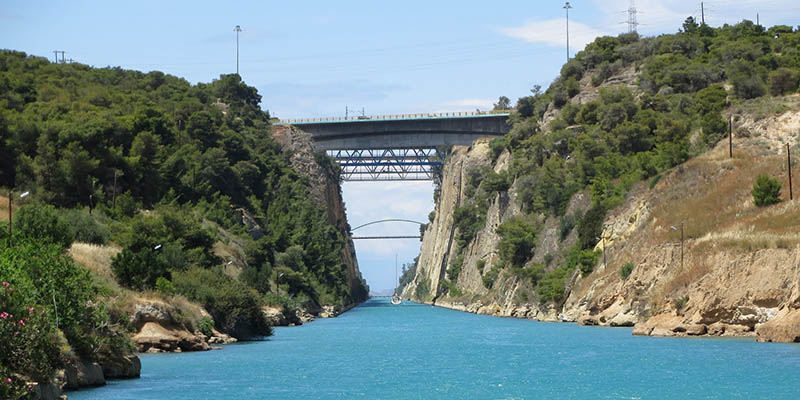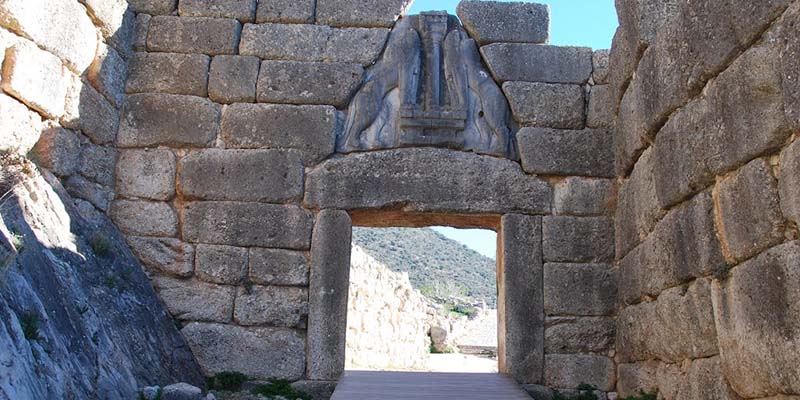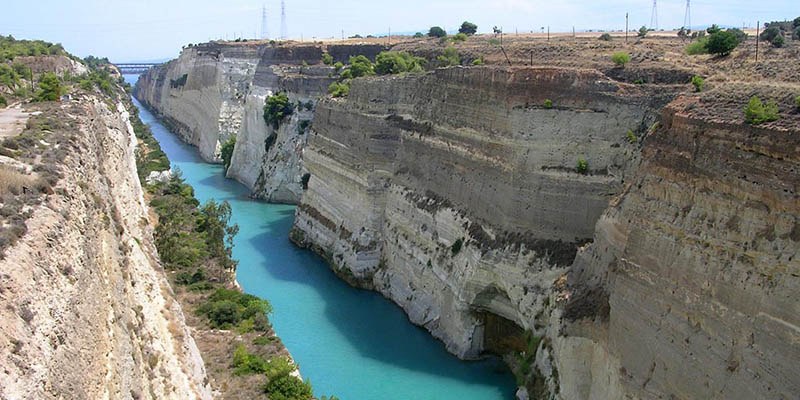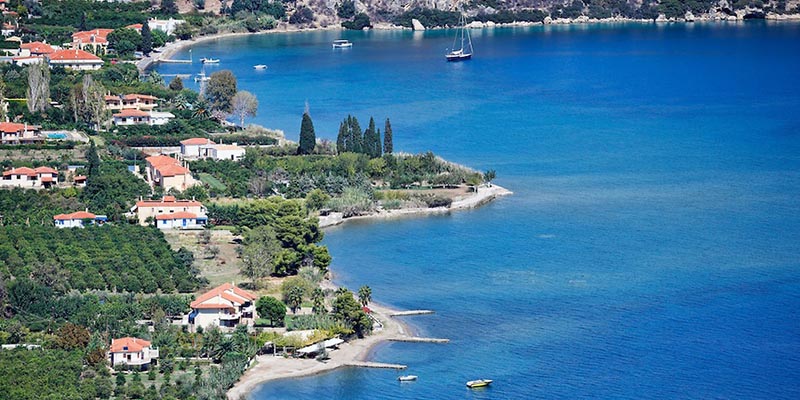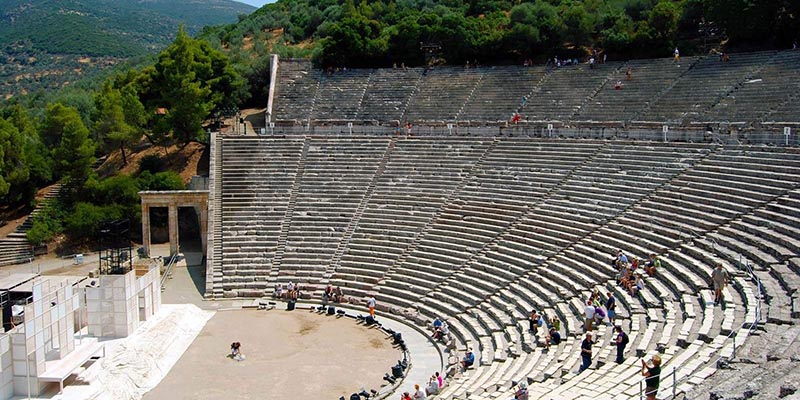Places
- Corinth Canal
- Epidaurus
- Mycenae
Full day tour
The Corinth Canal connects the Gulf of Corinth with the Saronic Gulf in the Aegean Sea. Dreamt of by Alexander the Great and Julius Caeser, the Canal was finally built in 1893 saving 200 nautical miles of often dangerous seas. It cuts through the narrow Isthmus of Corinth and separates the Peloponnese from the Greek mainland, thus effectively making the former peninsula an island. It is 6.4 kilometres (4.0 mi) in length but only 21.4 metres (70 ft) wide at its base, making it impassable for most modern ships and today it is used mainly for tourist traffic.
Crossing the Canal we enter the land of myths and legends. Passing Nemea where Hercules killed the Nemean Lion, we come to the district of Argolida, named after the city of Argos home of Jason of the Argonauts. However more important in ancient history is the ancient city of Mycenae, home of Agamemnon, the king who led the Greeks in the Trojan wars. See the magnificent walls and the impressive entrance of the Lions Gate. Outside the walls lies the beehive Tomb of Agamemnon further back that of his treacherous wife Clytemnestra.
A short drive away lies Epidaurus, site of healing and of one of the greatest theatres ever built. In an idyllic, peaceful setting, Epidaurus was a centre of healing in ancient times where patients came from far and wide for cures. There is evidence that even complicated brain surgery was carried out here. Part of the cure here was also relaxation and culture and the massive theatre here, built in 330BC and seating 14,000 people, still has some of the best acoustics in the world. Without a microphone you can hear a coin drop from the highest levels.

